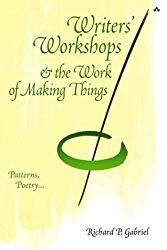- About
- Workshop Description
Workshop members: I published this article on LinkedIn on September 10, 2018. I include it here because the people who reviewed it, Rosalinda Ballesteros, Corey Zadik, and Francesca Genova, all thought I had written it for new workshop members to understand how to get started. Francesca used the questions listed under Round 2 to enhance her strengths discussions. So I am posting it here so that it is easily available even as it scrolls down my LinkedIn page. |
The 1-2-3 Method of Feedback
 Feedback is a gift, right? Yet I’m willing to bet that most people are anxious about getting feedback on their work. Here’s a sample of the responses I’ve heard fom people after having their work reviewed: “Why didn’t he get it?” “Didn’t I do anything right?” “I just don’t have the energy to fix it.”
Feedback is a gift, right? Yet I’m willing to bet that most people are anxious about getting feedback on their work. Here’s a sample of the responses I’ve heard fom people after having their work reviewed: “Why didn’t he get it?” “Didn’t I do anything right?” “I just don’t have the energy to fix it.”
I wondered if there were a way to give and get feedback that would make it really feel like a gift.
 To find out, I started an experiment in 2013, inviting 8 writers to participate in a writers’ workshop using the approach described in Richard Gabriel’s wonderful book on writers' workshops. He had used the approach with poets and software engineers. I figured it could work for change agents and entrepreneurs, in fact for anyone who wants to make writing less solitary.
To find out, I started an experiment in 2013, inviting 8 writers to participate in a writers’ workshop using the approach described in Richard Gabriel’s wonderful book on writers' workshops. He had used the approach with poets and software engineers. I figured it could work for change agents and entrepreneurs, in fact for anyone who wants to make writing less solitary.
Fast forward 5 years. With the help of 3 assistants, I have run more than 600 workshop meetings involving around 75 writers and reviewing nearly 1250 pieces of writing. The process works. It helps the reviewers give actionable feedback, and it helps the writers grow in confidence.Not interested in writing? Before you turn away, consider what one participant wrote about participating:
“I love working with the Writer’s Workshop! I’ve gotten so much out of it. I’m better at giving and receiving feedback, and my writing is getting stronger.” ~ M. Scott Ford, Founder & Chief Code Whisperer, Corgibytes
Let me walk you through a review so that you can see the elements that could be reused in other feedback opportunities.
Setting the Stage
 Let’s say we have an 850-word blog post by Jessica. The other three workshop members and I have all read it ahead of time to prepare our comments. Jessica introduces the piece very, very briefly, “I want to publish it on my home improvement blog.” Then I invite her to become a fly on the wall and not speak again until the review is over. This liberates her to listen. Instead of needing to explain or defend what she wrote, she can hear how people experienced her piece. It’s hard to listen and mentally compose responses at the same time.
Let’s say we have an 850-word blog post by Jessica. The other three workshop members and I have all read it ahead of time to prepare our comments. Jessica introduces the piece very, very briefly, “I want to publish it on my home improvement blog.” Then I invite her to become a fly on the wall and not speak again until the review is over. This liberates her to listen. Instead of needing to explain or defend what she wrote, she can hear how people experienced her piece. It’s hard to listen and mentally compose responses at the same time.
We do the review in three rounds. As the facilitator, I call on people (including myself) and jumble up the order so that the same person doesn’t always go first.
Round 1: ABOUT
In turn, reviewers describe how they experienced the work. For example: “This piece was about steps to take before starting a home improvement project,” or “This piece gave me a confidence boost to start working on getting my bathroom renovated.” These observations can be short summaries, statements of the major theme, or discussions of emotional impact. They are usually brief, and several reviewers may say roughly the same thing. If everybody takes away the same message, that’s great, so long as it was the message Jessica intended. If not, Jessica knows what to do. Round 1 helps her step outside her own point of view to observe how other people experience her work.
Round 2: STRONG
Each reviewer takes a turn answering the question, “What makes this piece of writing strong?”

Here are some questions that help people look for what’s strong:
- What really worked?
- What did I really like?
- What would I keep no matter what else changes in the piece?
- What parts do I remember best?
The best feedback is very specific to the work. Contrast “Great post,” to “The way you demonstrated how to choose between different kinds of flooring was so clear and sharp that I’ll print it out to keep for the next time I remodel my kitchen.”
Of course, the focus is on the writing, not the writer. Contrast “You are a great writer,” to “The way you opened the post made me curious. I don’t always read past the first paragraph of blog posts, but I really wanted to know how things would turn out.” Reviewers might comment on the theme, the story arc, what gave the message power. They may read aloud particular sentences that they found eloquent.
Perhaps most important, the feedback offers insight into what’s good. Approval is great, but Jessica needs to know how the approval was earned so she can do it again. Contrast “You know a lot about home improvement,” to “You showed me how to sort through my ideas, who to get involved, and how to be sure I will still like my renovation after a few years.”
I’ve observed many occasions when people hear strengths in their writing that they didn’t even know were there. Jessica sees how her own style works. When she gets really topnotch positive feedback, she feels that she has really been seen. She is not just a person in a crowd.
This doesn’t always come easily to reviewers. Looking for strengths before looking for things to be fixed takes discipline because we’re all used to going right for the jugular. Here’s an observation of a workshop member quoted in Gabriel’s book (p. 128):
"Many times I’ve reviewed a workshop paper where I really could not think of anything positive to say. I didn’t like the name. The solution didn’t work for me, etc. What always happens, however, is that when someone begins with a positive comment, I suddenly see lots of things I can add. This never fails and now I look forward to seeing this miracle happen. It says something about the power of good or the ability we all have to pull each other up."
Round 3: STRONGER
Each reviewer answers the question, “What, in my opinion, would make this piece even stronger?” That gives reviewers the chance to do what we all expect to do in reviews: add value by suggesting changes.
B ut notice two things about the question: “in my opinion” is a reminder to both Jessica and the reviewer that Jessica can take or leave the comment. It’s her writing, and she is the one who decides what feedback to use.
ut notice two things about the question: “in my opinion” is a reminder to both Jessica and the reviewer that Jessica can take or leave the comment. It’s her writing, and she is the one who decides what feedback to use.
It also leaves the floor open for other opinions. It’s not uncommon for two reviewers to have conflicting opinions. Readers are not all alike.Second, the question is about making it even stronger. Somehow that wording makes it easier to hear the comments because they are not aimed at fixing what’s broken, but instead making something even more effective.
Finishing the Review
Finally, we invite the author back into the circle to ask questions for clarification. Perhaps the author did not quite catch a particular suggestion while she was a fly on the wall. We have one rule for the author: no explanations allowed! The author can take or leave any comment made by the group. We don’t need to be told what Jessica meant it to mean. Either we saw it, or she has work to do.
What’s in it for Reviewers?
It’s not too hard to see what’s in it for writers. They get to observe the way their pieces are received, hear the strengths spoken out loud, and receive specific suggestions for improvement. But what’s in it for the reviewers?
Reviewers build their own skill by practicing and paying attention to what works. They recognize things done well, and they pick up new ways of making meaning. If they struggle to understand, they become more aware of the need to support the understanding of their own audiences. I took the article you are reading through a workshop. One of the reviewers said I forgot to mention that he gets to read really interesting pieces. He also likes seeing works in progress because it helps him accept the imperfections of his own drafts. Going through a review implies being willing to revise.
Not Just for Writing
Several people have told me that workshop practice has helped them get better at giving feedback in all sorts of other situations.So imagine applying this approach to any aspect of workplace performance. You’ve just observed someone giving a presentation, leading a meeting, testing a program, creating a strategy, organizing a team, or keeping track of status. Picture yourself using the three rounds: “This is what I saw. This is what’s strong about it. This is what would make it even stronger, in my opinion.” Perhaps you will become more skillful yourself by paying such close attention to the strengths of someone else’s work.
How could you use the 1-2-3 method to make feedback a gift at work or at home?
Acknowledgments
Thanks to the three people who have assisted me with facilitation: Bess Keller, Brian Branagan, and Corey Zadik. They have all been members of workshops as well as facilitating workshops on their own. I also want to thank Richard Gabriel for writing his wonderful book.
References
Britton, K. H. (2018). Write! Experiments to build skill and confidence in your own words. Script for workshop for the Canadian Positive Psychology Association conference workshop given 24 May 2018.
Britton, K. H. (2018). 7 experiments to liberate your voice. Handout for workshop for the Canadian Positive Psychology Association conference workshop given 24 May 2018.
Gabriel, R. (2002). Writers’ workshops & the work of making things. Addison Wesley. Available online.
Picture credits from Unsplash
- Gifts Photo by Kari Shea on Unsplash
- Woman writing: Photo by Kinga Cichewicz on Unsplash
- Sparklers Photo by Warren Wong on Unsplash
- Practice Photo by rawpixel on Unsplash
Simultaneously published in Positive Psychology News, a source of nearly 1500 articles on applications of positive psychology, and LinkedIn.

